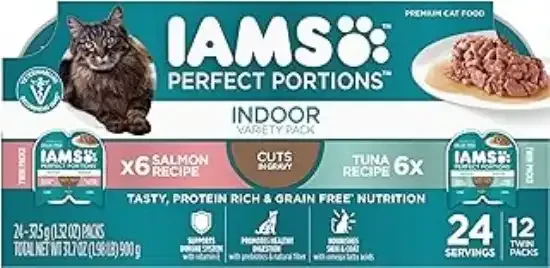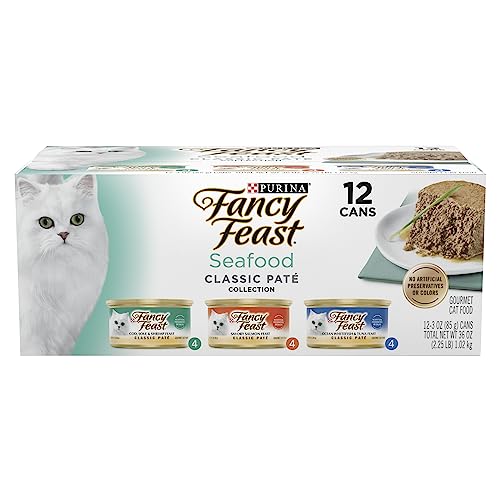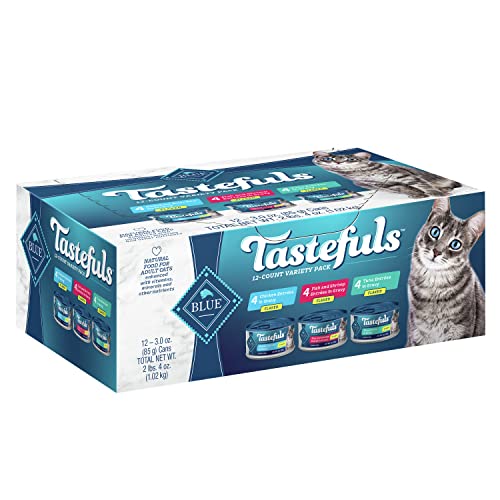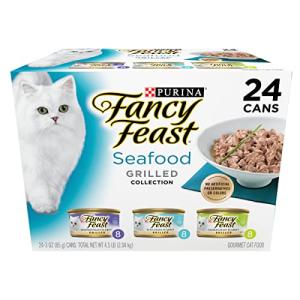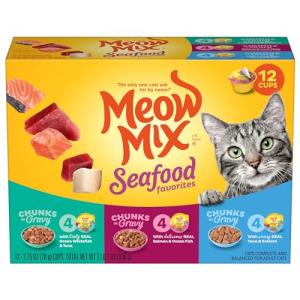We all want our cats to be happy, healthy, and full of purrs. We envision them thriving, their coats gleaming, their eyes bright, bounding with energy and showering us with affection. And while love, playtime, and cozy naps all contribute to this picture of feline bliss, there's a foundational element that underpins it all: their diet. What we put into our cat's food bowl is not just sustenance; it's the very fuel that powers their happiness, their health, and their long and vibrant life. Just as a house needs a strong foundation, a cat’s well-being is built upon a diet that provides the right nutrients in the right balance.
Choosing the “best” cat food, however, can feel like navigating a bewildering maze. Aisles in pet stores overflow with bags and cans, each promising optimal nutrition, delicious flavors, and a host of health benefits. Dry, wet, raw, grain-free, limited ingredient – the options seem endless, and the marketing claims can be overwhelming. It’s easy to feel lost, unsure of where to even begin to decipher what truly constitutes the ideal diet for your feline friend. But fear not! Choosing the right cat food doesn't have to be a source of stress and confusion. This article aims to be your guide, to cut through the marketing jargon and equip you with the knowledge to make informed decisions, ensuring you're providing the very best nutrition to support a lifetime of happiness and health for your cherished cat. We’ll explore the fundamental nutritional needs of cats, unravel the complexities of cat food options, and empower you with the tools to confidently choose the perfect diet for your purrfect companion.
To understand the best food choices, we must first understand the fundamental dietary needs of cats. At their core, cats are obligate carnivores. This isn't just a preference; it's a biological imperative. For millions of years, cats have evolved as hunters, their bodies meticulously adapted to thrive on a diet primarily composed of meat. This evolutionary history dictates their nutritional requirements and sets them apart from omnivores like dogs or humans. Understanding this obligate carnivore nature is the cornerstone of making informed cat food choices. It means that cats must obtain certain essential nutrients from animal sources to survive and flourish. They are not simply “meat lovers”; their physiology is fundamentally designed to process and utilize nutrients most efficiently from animal tissues.
So, what are these key nutrients that underpin feline health and happiness? First and foremost is protein, and not just any protein, but high-quality animal protein. Protein is the building block of life, essential for muscle maintenance, tissue repair, organ function, and a robust immune system. While protein can be derived from plant sources, animal proteins are considered “complete” for cats, meaning they contain all the essential amino acids cats need in the right proportions. These amino acids, the smaller units that make up proteins, are vital for countless bodily processes, and cats are less efficient at utilizing plant-based proteins to meet these needs. Look for cat foods that clearly list named animal protein sources like chicken, turkey, fish, or beef as primary ingredients.
Next are fats, specifically healthy fats. Fat is a concentrated source of energy for cats, providing more than twice the calories per gram compared to protein or carbohydrates. It’s also crucial for hormone production, nutrient absorption (particularly fat-soluble vitamins), and maintaining healthy skin and a lustrous coat. Omega-3 and Omega-6 fatty acids, often found in fish oils and animal fats, are particularly important for cats, supporting brain function, reducing inflammation, and contributing to coat health. Again, animal-based fats are typically more readily utilized by cats than plant-based fats.
Among the essential amino acids, two stand out as critically important for feline health: taurine and arginine. Taurine is absolutely crucial for cats. They cannot produce enough of it on their own and must obtain it from their diet, exclusively from animal sources. Taurine deficiency can lead to severe health problems, including heart disease (dilated cardiomyopathy), vision impairment (retinal degeneration), and digestive issues. Arginine is another essential amino acid vital for protein metabolism and the removal of ammonia from the body. Like taurine, cats have a limited ability to synthesize arginine and rely on dietary intake, primarily from animal proteins.
Vitamins and minerals, while needed in smaller quantities, are also indispensable for various bodily functions. Essential vitamins for cats include Vitamin A (important for vision and immune function), Vitamin D (calcium absorption), Vitamin E (antioxidant), and B vitamins (energy metabolism). Key minerals include calcium and phosphorus (bone health), and others. A balanced and complete cat food formulation will provide these essential vitamins and minerals in appropriate amounts, often supplemented to ensure optimal levels.
Finally, water, though not a nutrient in itself, is absolutely vital for hydration. Cats, by nature, have a lower thirst drive and tend to obtain much of their water from their food, particularly from prey in the wild. This is why hydration can be a concern, especially for cats primarily fed dry kibble, which has a significantly lower moisture content than wet food. Ensuring access to fresh, clean water is always critical, and incorporating wet food into their diet can be a significant way to boost hydration.
Conversely, understanding what cats don't need, or need in limited amounts, is equally important. Excessive carbohydrates are not biologically appropriate for cats. While cats can digest some carbohydrates, they are not designed to process large amounts, and carbohydrates are not their primary energy source. High-carbohydrate diets can contribute to weight gain, and some research suggests potential links to other health issues. While small amounts of grains or vegetables can be present in some cat foods, they should not be the foundation of the diet. Plant-based proteins, while sometimes used in cat food formulations, should not be the primary protein source. As obligate carnivores, cats are optimized to utilize animal proteins, and plant proteins alone do not provide the complete spectrum of amino acids they require in the most bioavailable form. While some plant ingredients can provide fiber, vitamins, or minerals, always prioritize cat foods that feature named animal protein sources prominently.
Now that we understand the nutritional framework for feline well-being, let’s navigate the diverse landscape of cat food options. Dry cat food, or kibble, is perhaps the most common and widely available type. Its popularity stems from its convenience. Dry food is easy to store, easy to portion, and can be left out for free-feeding throughout the day. Some dry foods are also formulated to offer dental benefits, with kibble designed to help scrape plaque and tartar off teeth as the cat chews. Dry food is generally more cost-effective than wet food and boasts a longer shelf life before and after opening. However, dry food also has its downsides. Its lower moisture content is a primary concern, potentially contributing to dehydration, especially in cats who don't drink enough water independently. Dry food is often higher in carbohydrates compared to wet food, and while carbohydrate content varies, it’s generally higher than what a cat would naturally consume in a wild prey diet. Dry kibble can also be less palatable for some cats, particularly older cats or those with dental issues. Finally, dry food often undergoes more processing than wet food, potentially affecting the bioavailability of some nutrients.
Wet cat food, typically sold in cans or pouches, offers a different set of pros and cons. Its primary advantage is its high moisture content, which is excellent for promoting hydration and supporting urinary tract health. Wet food is often more palatable and aromatic to cats, making it a good choice for picky eaters or cats with reduced appetites. Generally, wet food formulations tend to be higher in protein and lower in carbohydrates compared to dry food, more closely mimicking a natural feline diet. However, wet food is typically more expensive than dry food, and once opened, it has a shorter shelf life and must be refrigerated. Wet food is less convenient for free-feeding as it can spoil if left out for extended periods. Relying solely on wet food might also raise some concerns about dental health, as it doesn't provide the same chewing action as kibble, although this is a less significant factor than diet quality itself.
Semi-moist cat food, while less common now, represents another category. Generally, semi-moist foods are not recommended as primary food choices. They are often higher in sugars and artificial additives to maintain their texture and palatability, and often fall short in nutritional quality compared to good quality dry or wet foods. It’s generally best to steer clear of semi-moist options and focus on higher-quality dry or wet food formulations.
Raw cat food diets represent a more advanced and sometimes controversial feeding philosophy. Proponents argue that raw diets, consisting of uncooked meat, bones, and organs, are the closest to a cat’s natural prey diet and can offer benefits like improved digestion, coat health, and energy levels. However, raw diets also carry significant concerns. They require meticulous planning and preparation to ensure nutritional balance and safety. The risk of bacterial contamination (Salmonella, E. coli, etc.) is a serious concern for both cats and humans in the household, requiring strict hygiene practices. Raw diets can be expensive and time-consuming to prepare properly, and they are not suitable for all owners or cats, particularly immunocompromised cats or households with young children. If you are considering a raw diet, it is absolutely essential to consult with a veterinarian or a veterinary nutritionist to ensure it is nutritionally complete and safe for your specific cat. Expert guidance is not optional; it’s a necessity.
Homemade cat food, similar to raw diets, is another advanced option that requires significant expertise. While some owners are drawn to the idea of controlling every ingredient, homemade diets carry the same risks of nutritional imbalance and potential contamination if not formulated and prepared correctly. Strongly emphasize that creating a complete and balanced homemade diet for cats requires expert guidance from a veterinary nutritionist. Simply cooking meat and vegetables at home is highly unlikely to meet a cat’s complex nutritional needs and can lead to serious deficiencies. Homemade diets are not recommended for casual home preparation without professional veterinary nutritionist advice.
With a grasp of feline nutritional needs and the cat food landscape, how do you choose the best food for your happy and healthy cat? Let’s create a checklist of key factors to guide your decision. Prioritize high-quality animal protein sources. Scan the ingredient list and ensure that a named animal protein source – chicken, turkey, salmon, etc. – is listed as the very first ingredient. This signifies that animal protein is the foundation of the food. However, don't stop at just the first ingredient; read beyond the first few. Look for wholesome, recognizable ingredients and be wary of excessive fillers like corn, wheat, or soy, especially if they are listed high on the ingredient list. Also, be cautious of artificial additives, colors, and preservatives, as these offer no nutritional value and may be detrimental to health in the long run. Vague terms like “meat by-products” can be acceptable if the source is specified and of good quality (e.g., “chicken by-product meal”), but be wary of generic “meat by-products” without source identification.
Ensure the food is formulated for your cat's appropriate life stage. Kitten food is designed to support rapid growth and development, adult maintenance food meets the needs of healthy adult cats, and senior or mature formulas are tailored for older cats, often with adjusted calorie levels and added joint support. Match the food to your cat's age and life stage for optimal nutrition. Critically, consider your cat’s individual needs. If your cat has any pre-existing health conditions, allergies, or sensitivities, always consult with your veterinarian for specific dietary recommendations. They may require prescription diets tailored to manage their conditions. The AAFCO (Association of American Feed Control Officials) statement of nutritional adequacy is an essential indicator of food quality. Look for the AAFCO statement on the packaging, which confirms that the food meets established nutritional standards for cats. Finally, research brand reputation. Choose reputable brands with a history of quality and transparency. Read online reviews (while keeping in mind individual experiences vary), and look for brands that are forthcoming about their ingredient sourcing and manufacturing processes.
Becoming a “label detective” is key to informed cat food choices. The ingredient list is a critical resource. Ingredients are listed in descending order by weight, so the first few ingredients make up the bulk of the food. Prioritize foods where named meat sources are high on the list. Look for wholesome grains or vegetables if present, but be wary of excessive fillers or unnamed "by-products" unless the source and quality are clearly specified. The guaranteed analysis provides percentages of crude protein, crude fat, crude fiber, and moisture. For cats, aim for foods with a higher percentage of crude protein and a moderate percentage of fat. Fiber should be relatively low, and moisture content is particularly important for wet food. Remember "crude" refers to the minimum or maximum amount guaranteed, not the exact percentage. Re-check for that AAFCO statement – it will specify if the food is “complete and balanced for all life stages” or “adult maintenance.” Choose the appropriate statement based on your cat’s age. Finally, feeding guidelines on the label are just that – guidelines. They are a starting point, but individual cat needs vary greatly based on age, activity level, metabolism, and health. Monitor your cat's weight and body condition, and adjust portion sizes accordingly, rather than blindly following label guidelines.
When you do choose a new food, making the switch smoothly is crucial. A sudden dietary change can wreak havoc on a cat's digestive system, leading to vomiting and diarrhea. A gradual transition is essential to allow their digestive system to adapt. A common method is the 7-10 day transition. Start by mixing a small amount of the new food (around 25%) with their current food (75%). Over the next few days, gradually increase the proportion of the new food while decreasing the old food, aiming for a complete switch to the new food by day 7-10. Throughout the transition, closely monitor your cat's stool consistency, appetite, and overall well-being. If you notice any digestive upset, slow down the transition process. It's generally best to transition food during routine changes or when switching to a higher quality food. Avoid transitioning during times of stress, illness, or sudden appetite changes without consulting your veterinarian first.
Beyond the food bowl itself, enhancing mealtime and overall nutrition involves several additional considerations. Always ensure fresh, clean water is available at all times, especially if feeding dry food. Consider multiple water sources, and some cats prefer drinking from fountains or moving water. Portion control feeding or scheduled feeding, where you measure out specific amounts of food at set times, is generally recommended for cats, especially indoor cats, to help manage weight and monitor appetite. Free-feeding dry food, leaving food available constantly, can be convenient but may contribute to overeating and weight gain in sedentary cats. Treats should be used in moderation and should be healthy, cat-appropriate options, not making up a significant portion of daily calories. Create a calm and positive feeding environment, reducing stress at mealtime, providing quiet feeding areas, and avoiding competition in multi-cat households by feeding cats separately if needed. Consider food enrichment strategies like puzzle feeders or hiding food around the house to stimulate cats mentally and physically, slow down eating, and prevent boredom.
Finally, remember your veterinarian is your partner in feline nutrition. For cats with pre-existing health conditions, vet consultation is non-negotiable. They may require specific therapeutic or prescription diets to manage their conditions effectively. If you notice unexplained weight gain or loss in your cat, consult your vet, as it could indicate a dietary imbalance or an underlying health issue. Persistent digestive issues, like vomiting or diarrhea, especially after dietary changes, also warrant veterinary attention. If you suspect food allergies, your vet can help diagnose and recommend appropriate elimination diets or hypoallergenic food options. And if you are simply unsure what food to choose and feel overwhelmed by the options, don't hesitate to ask your veterinarian for personalized advice tailored to your cat's individual needs and lifestyle.
Choosing the best cat food is an act of love, a commitment to nourishing a lifetime of feline happiness and health. By understanding the fundamental nutritional needs of cats, navigating the cat food landscape with informed eyes, decoding food labels, and partnering with your veterinarian, you can confidently make choices that truly fuel your cat's well-being. Remember, a happy cat is often a healthy cat, and a healthy cat starts with a diet that provides the foundation for a long, vibrant, and purr-filled life. Embrace the journey of thoughtful feline nutrition, and you’ll be rewarded with a lifetime of purrs, cuddles, and the unwavering companionship of a thriving feline friend.
